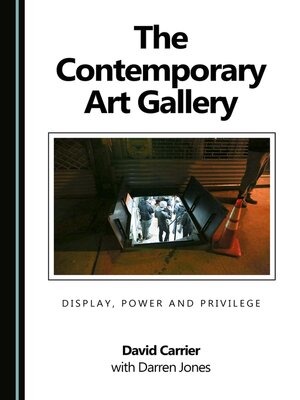
Sign up to save your library
With an OverDrive account, you can save your favorite libraries for at-a-glance information about availability. Find out more about OverDrive accounts.
Find this title in Libby, the library reading app by OverDrive.



Search for a digital library with this title
Title found at these libraries:
| Library Name | Distance |
|---|---|
| Loading... |
Everyone who looks at contemporary art is familiar with galleries. But visual features of these mysterious temples tend to be taken for granted. The basic purpose of this book is to enliven the reader's latent knowledge of galleries, including architectural motifs, the intended impression that is conveyed to the visitor, and human interactions within them.The contemporary art world system includes artists' studios, art galleries, homes of collectors and public art museums. To comprehend art, one needs to understand these settings and how it travels through them. The contemporary art gallery is a store where luxury goods are sold. What distinguishes it from stores selling other luxuries—upscale clothing, jewelry, and posh cars—is the nature of the merchandise. While much has been written about the art, this book uncovers the secretive culture of the galleries themselves. The gallery is the public site where art is first seen—anyone can come and look for free. This store, a commercial site, is where aesthetic judgments are made. Art's value is determined in this marketplace by the consensus formed by public opinion, professional reviewers and sales. The gallery, then, is the nexus of the enigmatic, billion dollar art world, and it is that space that is dissected here. The first chapter briefly describes the beginnings of the present contemporary art gallery. The second presents the experience of gallery going, presenting summary accounts of visits to some contemporary galleries. The third expands and extends that analysis, with detailed close up descriptions and comparative evaluations of many diverse contemporary galleries, in order to identify the challenges provided by these marvelous places. Then the fourth chapter indicates why, in the near future, due to the proliferation of myriad art fairs and online platforms extant today, such galleries might disappear altogether.







